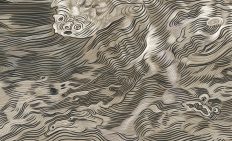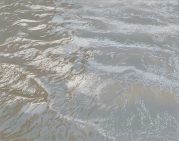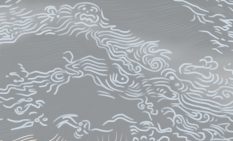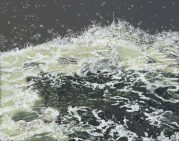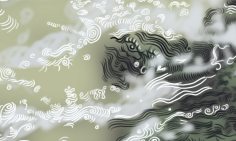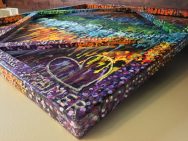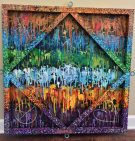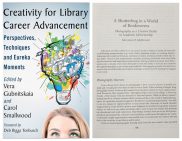by Lauren Wahman and Heather Maloney
The Life of the Mind lecture and Artists, Authors, Editors & Composers combined event took place on September 22, 2020. As a follow up, the UCBA Library celebrates selected works submitted this year from UCBA faculty and staff. In case you missed it, please visit Life of the Mind for the online exhibit, bibliography, and event recording.
David Hartz | Associate Professor | Electronic Media Communications Department
- David Hartz
- Drawing Water series, overall view
- Drawing Water series, detailed view
- Drawing Water series, overall view
- Drawing Water series, detailed view
- Drawing Water series, overall view
- Drawing Water series, detailed view
Description of My Creative Process: This new body of work is titled, “Drawing Water.” This series consists of drawings of various water sources I have seen in and around Ohio. I became interested in this subject matter after seeing Leonardo da Vinci’s drawings depicting how water moves around various objects. I am fascinated as to how water moves and how I could add values and depth to drawing this formless element. I study martial arts and this quote by Bruce Lee inspired me as well, “Empty your mind, be formless, shapeless – like water.” Water forms to whatever contains it. My intention with these drawings is to give, not only shape, but also value, shadow, highlight and playfulness to moving water.
All of these drawings are created in Procreate on an iPad Pro. I love the portability of the iPad and use it with my Urban Sketching group as well. It has replaced my sketchbook and pencils in many situations. I have found that it has a feature that no traditional media has. In this digital arena, the ability to zoom way into a piece of work is remarkable. As long as the resolution is high, you can zoom way into the art and provide details that would be near impossible with traditional media. I am making use of this feature in my current drawings in this “Drawing Water” series. This is the reason that I include detail shots in the submission of these drawings. Normally a detail shot is unnecessary in a 2D drawing, however, it is quite necessary to show the full detail that are involved with these works. Each drawing has two views: one is the overall view of the water that, at first, has a photographic look. The second view is the detailed view of the work as you move in close to it and see the hieroglyphic mark making process.
John Kraimer | Program Director | Office of Accessibility Resources
- John Kraimer
- Essential Elements, front view
- Essential Elements, back view
- Essential Elements, full back view
- Essential Elements, side view
Description of My Creative Process: Essential Elements is a 3’×3’ acrylic artwork on canvas. It is both a visual and tactile artwork. There are raised words and images made of sand/glue, and braille messages made from several hundred metal screw heads. All raised surfaces are coated with phosphorescent paint and glow in the dark. Every surface area of the canvas (front, back, sides & framework) contains art. Additionally, the canvas is designed to hang in any direction from a hook suspended from the ceiling. There is no specific side which is up or down, front or back. Viewers are encouraged to explore the artwork through touch, and to reposition the artwork in a different direction to change the view.
Michelle McKinney | Associate Senior Librarian | Library
- Michelle McKinney
- Book cover for A Shutterbug in a World of Bookworms: Photography as a Creative Outlet in Academic Librarianship
Description of My Creative Process: This book chapter was a passion project. I had the opportunity to write about how I am able to incorporate one of my hobbies, photography, into my academic life. My hope is that others are inspired to merge personal interests and career work in fun and creative ways.
Citation:
McKinney, M. (2019). A Shutterbug in a World of Bookworms: Photography as a Creative Outlet in Academic Librarianship. In V. Gubnitskaia & C. Smallwood (Eds), Creativity for Library Career Advancement: Perspectives, Techniques and Eureka Moments (pp 181-188). McFarland.
Kevin Oberlin | Associate Professor of English | English & Communication Department
- Kevin Oberlin
- Front cover for Dunes Review
- Front cover for Blood & Bourbon
Description of My Creative Process: I worry over my poems. Like their subjects, they sometimes fascinate and sometimes repulse me. My process reminds me of Douglas Adams’s description of Vogons, fictional bureaucrats notorious for their poetry. They prefer their orders “sent in, sent back, lost, found, queried, subjected to public inquiry, lost again, and finally buried in soft peat for three months and recycled as firelighters.” It’s circuitous, recursive, and messy; but there’s always light at the end.
Citations:
- “Bigfoot in the Willowwacks.” Dunes Review, vol. 32, no. 2, Oct. 2019, pp. 54-55.
- “Government Declares Full Control for First Time in Four Years.” Blood & Bourbon, vol. 6, Spring 2020, pp. 209-213.
- “Pillars.” Sweet Tree Review. Summer, 2019. Accessed 8 Sept. 2020.



